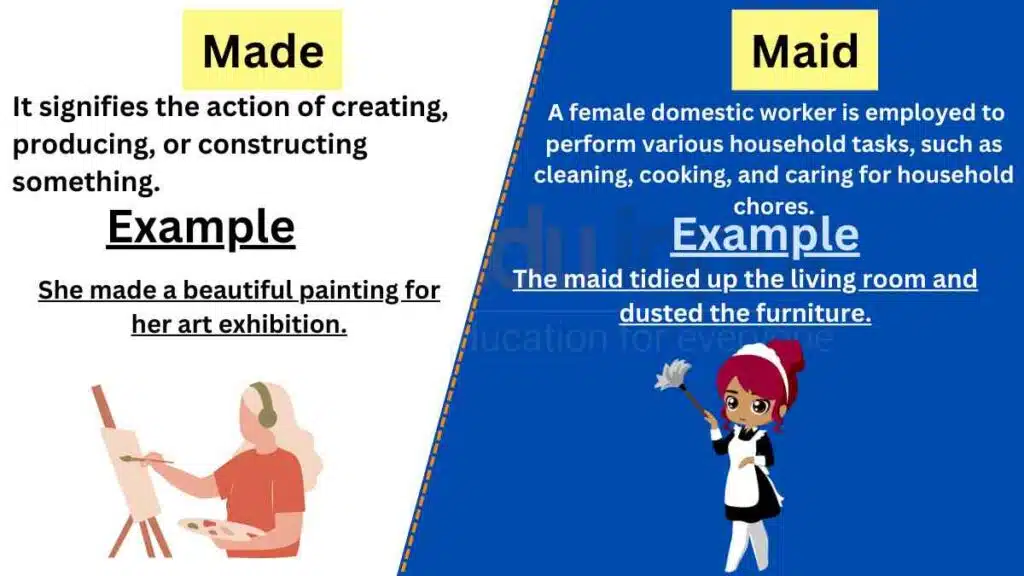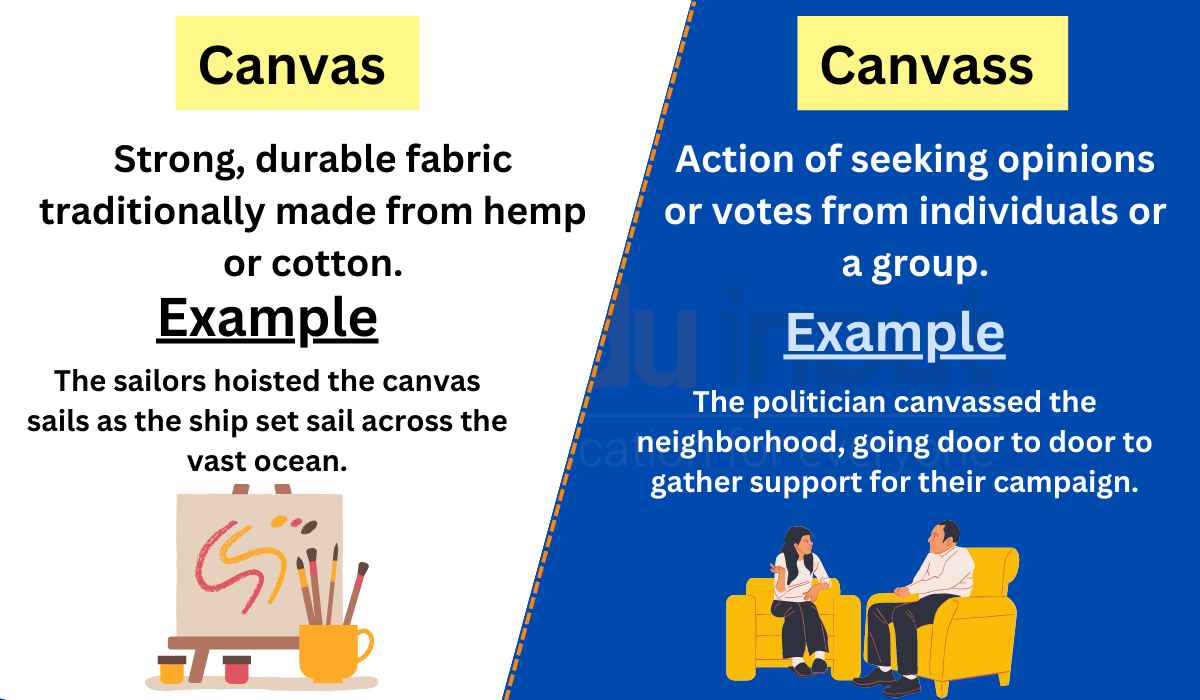Made vs Maid-Difference Between And Examples
In the realm of language, certain words may appear similar but possess distinct meanings and applications. One such pair is “made” and “maid.” Despite their visual resemblance, these words diverge significantly in terms of definition and usage. This article aims to untangle the differences between “made” and “maid,” shedding light on their unique contexts and implications.
By understanding their individual identities, we can navigate conversations and written text with clarity and accuracy. Join us as we explore the contrast between the act of creating or producing and the occupation of domestic service.

Meanings and Examples
Made Meaning
The meaning of “Made” is the past tense and past participle form of the verb “make.” It signifies the action of creating, producing, or constructing something.
Made Examples
- “She made a beautiful painting for her art exhibition.”
- “The chef made a delicious meal from fresh ingredients.”
- “He made a significant contribution to the scientific field.”
Maid Meaning
“Maid” refers to a female domestic worker who is employed to perform various household tasks, such as cleaning, cooking, and taking care of household chores.
Maid Examples
- “The maid tidied up the living room and dusted the furniture.”
- “They hired a maid to assist with daily household chores.”
- “The hotel provides maid service to ensure a clean and comfortable stay.”
Difference Between And Examples
| Made | Maid | |
| Meaning | The past tense of “make,” indicating creation or production | A female domestic worker employed for household tasks |
| Example | “She made a beautiful painting for her art exhibition.” | “The maid tidied up the living room and dusted the furniture.” |
| Usage | Creation, production, construction | Domestic service, household tasks |
| Context | Artistic endeavors, culinary creations, contributions | Cleaning, cooking, housekeeping |
Usage in a Paragraph
The term “made” finds its relevance in the domain of creation and production. It denotes the act of bringing something into existence or constructing it. For example, artists use their skills and imagination to create beautiful paintings, sculptures, or other forms of artwork. Similarly, chefs utilize their culinary expertise to make delicious meals using fresh ingredients. In the scientific realm, researchers and inventors contribute to advancements and discoveries that are made in their respective fields.
Conversely, “maid” pertains to a specific occupation within the realm of domestic service. Maids, typically female, are employed to perform various household tasks to ensure cleanliness and orderliness. They engage in activities such as cleaning, cooking, laundry, and general housekeeping. Many households and establishments, such as hotels, employ maids to maintain a clean and comfortable environment for residents or guests.
Although “made” and “maid” may share a similar appearance, their meanings and applications diverge significantly. “Made” revolves around the act of creating, producing, or constructing, often in artistic, culinary, or scientific contexts. On the other hand, “maid” represents the occupation of a female domestic worker engaged in household tasks and responsibilities. By understanding the nuances of these terms, we can communicate effectively, avoiding confusion and ensuring precise expression in various conversations and written exchanges.






Leave a Reply